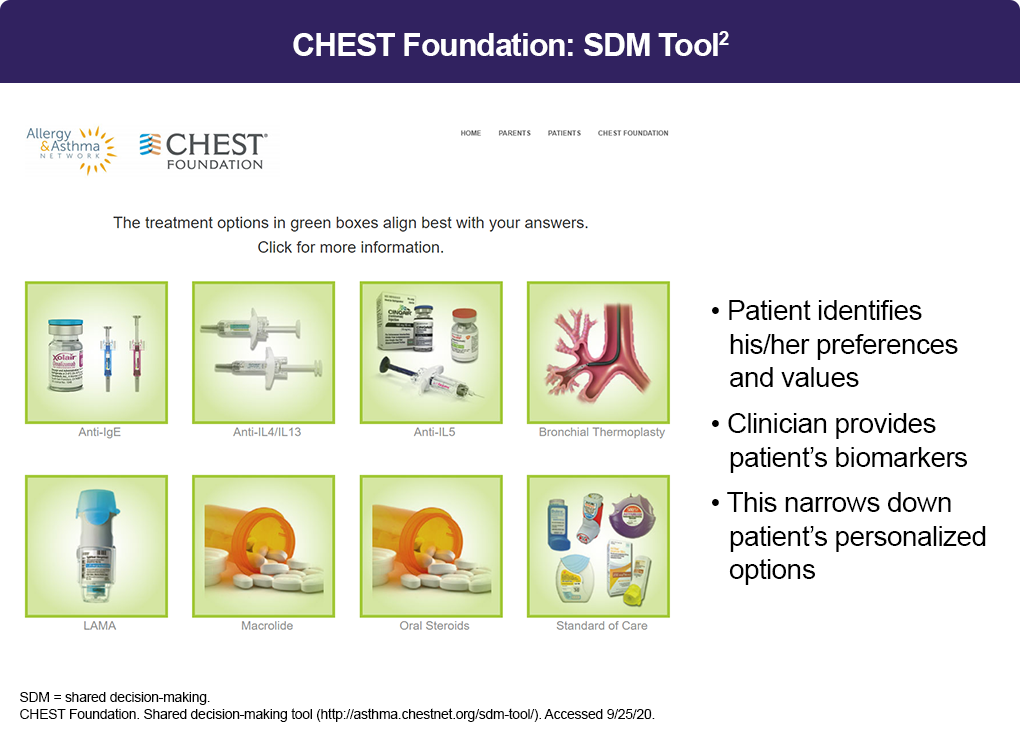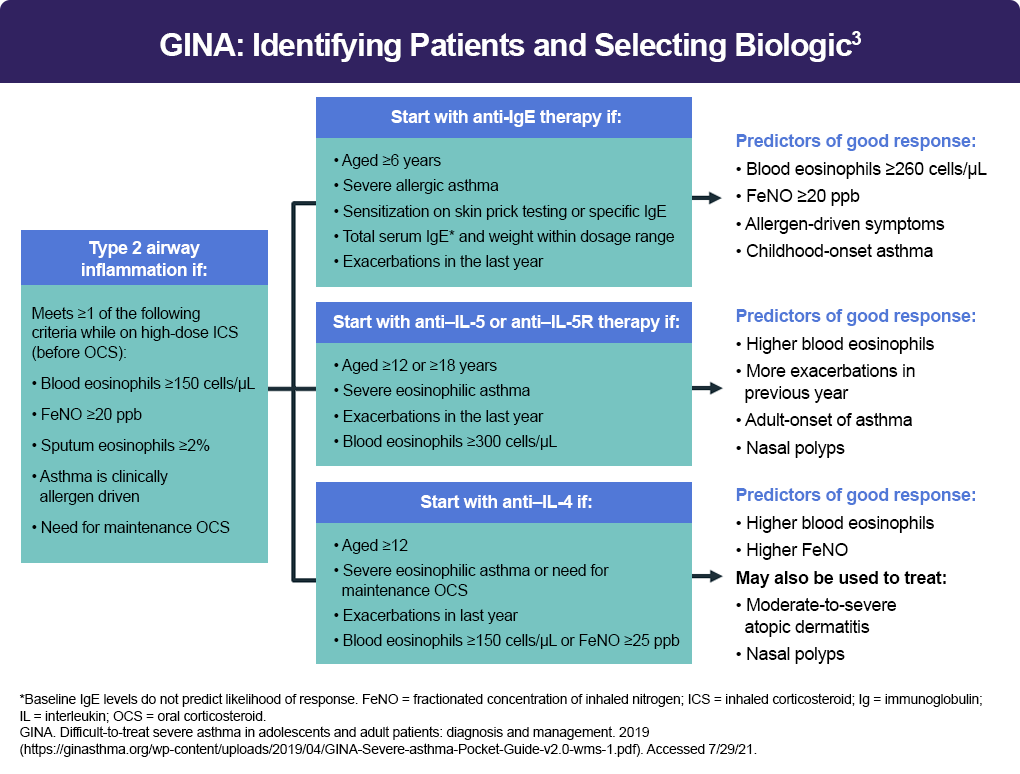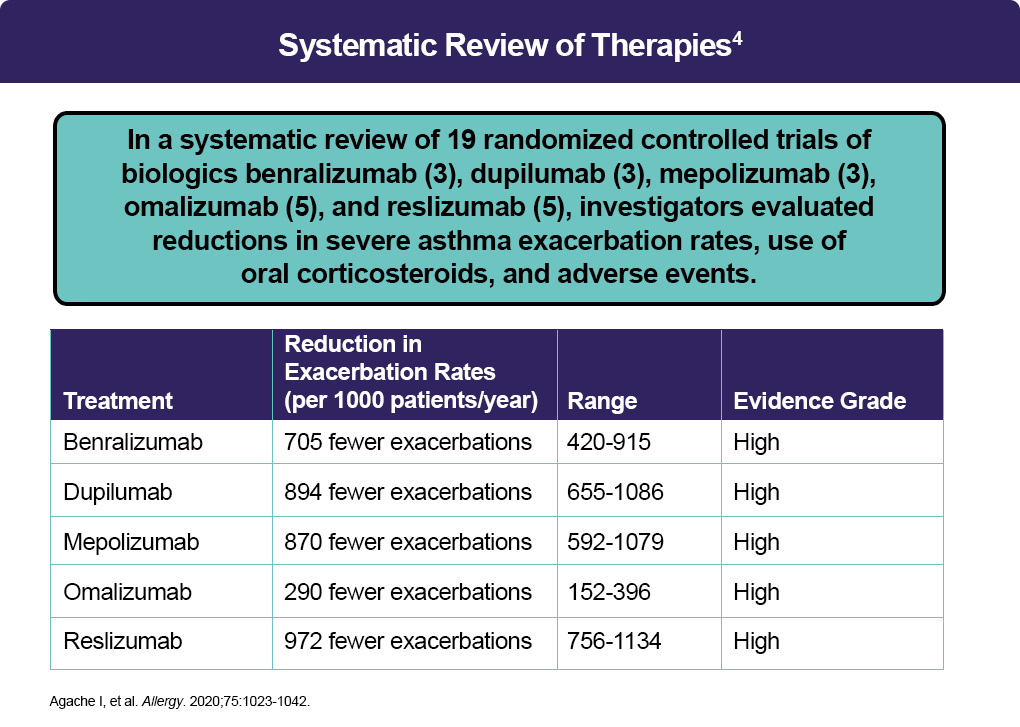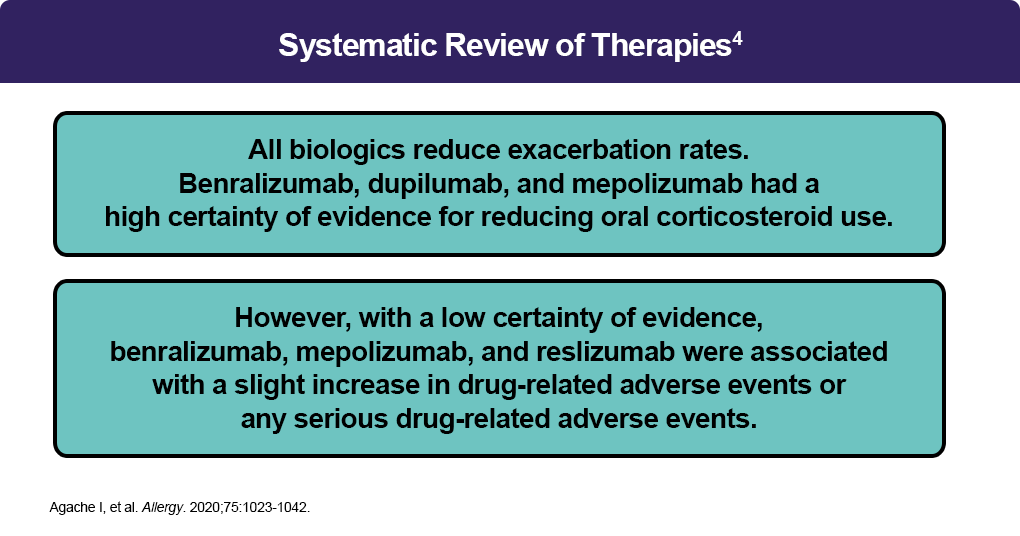Person Centered Care
The Impact of Person-Centered Care
In the management of severe asthma, shared decision-making is a crucial part of the treatment program. Patients must be able to make informed decisions about their treatment using the best available evidence. Patients should be aware of both the benefits and potential side effects associated with systemic therapies for severe asthma.1
To enable shared decision-making, clinicians can use tools and resources, such as the shared decision-making tool developed by the CHEST foundation. When patients with severe asthma are a part of the shared decision-making process, they may be more likely to adhere to asthma therapy and take charge of their goals for management of severe asthma. At The Breathe Initiative, we have severe persistent asthma tools and resources for providers.

SELECTION OF THERAPY IN SEVERE ASTHMA
In the selection of asthma therapy, it is crucial that clinicians take into account multiple biomarkers associated with severe asthma, including IgE testing, skin testing, total serum IgE levels, as well as eosinophil levels and nitric oxide concentrations in exhaled breath. When these biomarkers exceed certain levels, patients may qualify for certain treatments available for specific phenotypes of severe asthma, including asthma associated with aeroallergens and asthma associated with increased levels of eosinophils. Predictors of improved therapeutic response may include the presence of nasal polyps in patients receiving anti–IL-5 or anti–IL-5R therapy, the presence of atopic dermatitis in patients receiving anti–IL-4 therapies, or childhood-onset asthma in patients receiving anti-IgE therapy. Selection of treatment based on current guidelines and specific patient features may help optimize the likelihood of long-term response in cases of severe asthma.1
The use of asthma therapy treatments may also be informed by the latest evidence, as evaluated in a recent systematic review that estimated reductions in exacerbation rates with specific treatment options. Reviewing these data can help in the discussion of treatment options with patients in a comprehensive resource based on the latest severe asthma management data.



References:
- Global Initiative for Asthma (GINA). Global Strategy for Asthma Management and Prevention. Updated 2021 (https://ginasthma.org/wp-content/uploads/2021/05/GINA-Main-Report-2021-V2-WMS.pdf).
- CHEST Foundation. Shared decision-making tool (http://asthma.chestnet.org/sdm-tool/).
- Difficult-to-treat severe asthma in adolescents and adult patients: diagnosis and management. 2019 (https://ginasthma.org/wp-content/uploads/2019/04/GINA-Severe-asthma-Pocket-Guide-v2.0-wms-1.pdf).
- Agache I, Beltran J, Akdis C, et al. Efficacy and safety of treatment with biologicals (benralizumab, dupilumab, mepolizumab, omalizumab and reslizumab) for severe eosinophilic asthma. A systematic review for the EAACI Guidelines – recommendations on the use of biologicals in severe asthma. Allergy. 2020;75:1023-1042. doi:10.1111/all.14221
